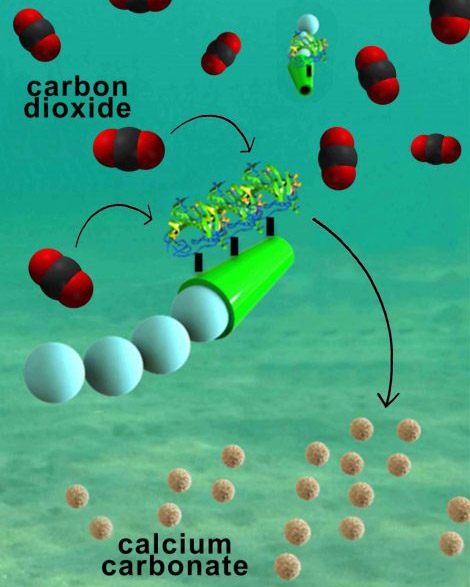 [Image: Diamond nanowires produced by physicist William Gilpin, used only for the purpose of illustration.]
[Image: Diamond nanowires produced by physicist William Gilpin, used only for the purpose of illustration.]
As part of some early prep, just putting notes together for a workshop I’ll be leading in Moscow later this summer, I thought I’d link back to this 2014 post by Paul Gilster on Centauri Dreams about “SETI at the Particle Level”—that is, the Search for Extraterrestrial Intelligence reimagined on radically different spatial scales than what humans have previously looked for.
“To find the truly advanced civilizations, we would need to look on the level of the very small,” Gilster suggests. We perhaps even need to look at the scale of individual particles.
“If SETI is giving us no evidence of extraterrestrials,” Gilster writes, “maybe it’s because we’re looking on too large a scale.”
What if, in other words, truly advanced intelligence, having long ago taken to non-biological form, finds ways to maximize technology on the level of the very small? Thus [Australian artificial intelligence researcher Hugo de Garis]’s interest in femtotech, a technology at the level of 10-15 meters. The idea is to use the properties of quarks and gluons to compute at this scale, where in terms of sheer processing power the improvement in performance is a factor of a trillion trillion over what we can extrapolate for nanotech.
Material evidence of this speculative, femto-scale computation could perhaps be detected, in other words, if only we knew we should be looking for it. (Instead, of course, we’re stuck looking for evidence of a very particular technology that was big on Earth a few decades ago—radio waves.)
 [Image: Electron interferometry, via the University of Cambridge, used only for the purpose of illustration.]
[Image: Electron interferometry, via the University of Cambridge, used only for the purpose of illustration.]
In any case, it’s interesting to put these thoughts in the context of a paper by Matt Edgeworth, published in Archaeologies back in 2010, called “Beyond Human Proportions: Archaeology of the Mega and the Nano.” Edgeworth’s paper was inspired by a deceptively simple insight: that human artifacts, in our era of chemical and material engineering, have departed radically from the spatial scale traditionally associated with archaeology.
We are always making history, we might say, but much of it is too small to see.
Rather than studying architectural ruins or sites the size of villages, what about archaeological artifacts visible only through chemical assays or scanning electron microscopes, whether they be so-called forever chemicals or simply microplastics?
Edgeworth himself refers to nano-scale transistors, graphene sheets, and materials etched using electron beam lithography. What role should these engineered materials—altogether different kinds of remains or cultural “ruins”—play in archaeology?
 [Image: An example of electron beam lithography, via Trevor Knapp/Eriksson Research Group/University of Wisconsin, used only for the purpose of illustration.]
[Image: An example of electron beam lithography, via Trevor Knapp/Eriksson Research Group/University of Wisconsin, used only for the purpose of illustration.]
“It used to be the case that archaeological features and artifacts were principally on a human scale,” Edgeworth writes. “But that familiar world is changing fast. As archaeology extends its range of focus further forward in time its subject matter is moving beyond human proportions. Developments in macro- and micro-engineering mean that artifacts are no longer limited in size by physical limitations of the body. As scale and impact of material culture extends outwards and inwards in both macroscopic and microscopic directions, the perspectives of contemporary archaeology must change in order to keep track.”
What’s so interesting about both the Centauri Dreams post and Matt Edgeworth’s paper is that signs of artificiality—whether they are human or not—might be discovered at radically different spatial scales, either here on Earth in modern archaeological sites or in the depths of space, where, for example, the alien equivalent of electron beam lithography might already have etched legible patterns into materials now drifting as micrometeoroids through the void.
Of course, the idea of applying for a grant to look for signs of alien lithography on micrometeoroids sounds more like a Saturday Night Live sketch—or perhaps the plot of a Charles Stross novel—but that doesn’t mean we shouldn’t do it (or something similar). After all, even humans themselves now leave micro- and nano- scale material traces behind in the dyes, chemicals, coatings, and etched materials we use everyday without thinking of these things as archaeological.
 [Image: Nanostructures made by German company Nanoscribe, used only for the purpose of illustration.]
[Image: Nanostructures made by German company Nanoscribe, used only for the purpose of illustration.]
If the fundamental assumption of SETI is that aliens have been communicating with each other through radio transmissions because humans used to heavily rely upon that same technology, then why not also assume that aliens are, say, manufacturing graphene sheets, 3D-printing on the nano-scale, or, for that matter, weaving computational textiles with synthetic-diamond nanowires?
(An unrelated post that is nevertheless interesting to think about in this context: Space Grain.)

 [Image: Micromotors at work, via
[Image: Micromotors at work, via  [Image: A Maltese limestone quarry, via
[Image: A Maltese limestone quarry, via